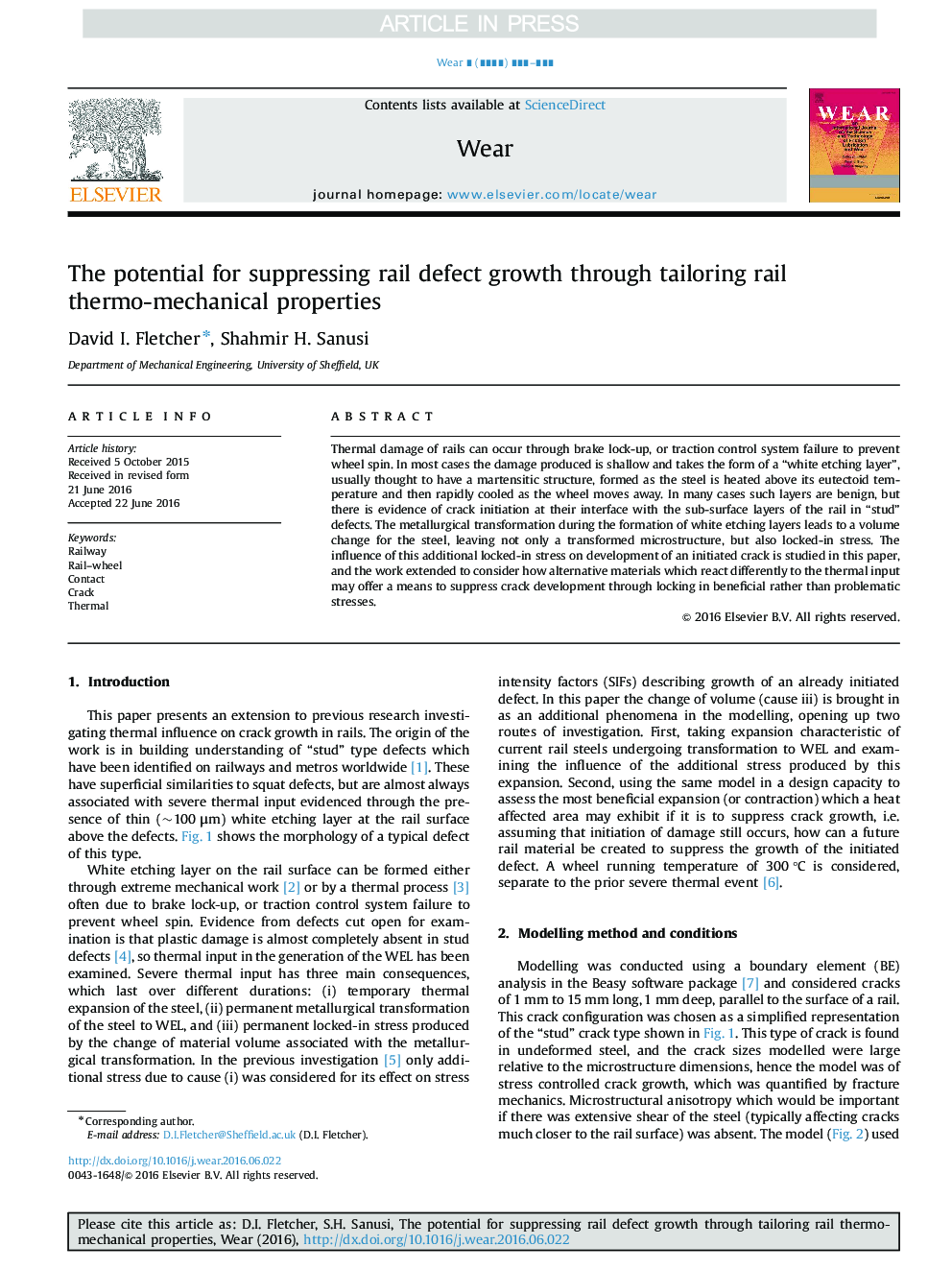| کد مقاله | کد نشریه | سال انتشار | مقاله انگلیسی | نسخه تمام متن |
|---|---|---|---|---|
| 4986868 | 1454958 | 2016 | 6 صفحه PDF | دانلود رایگان |
عنوان انگلیسی مقاله ISI
The potential for suppressing rail defect growth through tailoring rail thermo-mechanical properties
ترجمه فارسی عنوان
پتانسیل برای سرکوب رشد نقص خط آهن از طریق تمیز کردن ویژگی های ترمو مکانیکی راه آهن
دانلود مقاله + سفارش ترجمه
دانلود مقاله ISI انگلیسی
رایگان برای ایرانیان
کلمات کلیدی
راه آهن، ریل چرخ، تماس، ترک، حرارتی
ترجمه چکیده
آسیب های حرارتی ریل ها می تواند از طریق قفل ترمز یا سیستم کنترل کشش جلوگیری شود تا از چرخش چرخ جلوگیری شود. در اغلب موارد خسارت تولید شده کم عمق است و شکل لایه اچینگ سفید را می گیرد، معمولا تصور می شود که یک ساختار مارتنزیتی داشته باشد، شکل گرفته است به عنوان فولاد در بالای دمای یاتکتوئید گرم می شود و سپس به سرعت چرخانده می شود. در بسیاری از موارد این لایه ها خوش خیم هستند، اما شواهدی از آغاز کراک در رابط آنها با لایه های زیر سطح راه آهن در یک استودیو وجود دارد؟ عیوب. تحولات متالورژی در طول تشکیل لایه های اچینگ سفید منجر به تغییر حجم فولاد می شود، و نه تنها یک ریز ساختار تبدیل شده، بلکه استرس قفل شده نیز ایجاد می شود. تأثیر این اضافی قفل شده در استراتژی توسعه کراس آغاز شده در این مقاله مورد بررسی قرار گرفته است و این کار برای بررسی اینکه چگونه مواد جایگزین که واکنش متفاوت نسبت به ورودی حرارتی دارند ممکن است وسیله ای برای جلوگیری از توسعه کرک از طریق قفل شدن در سودمندتر باشد از تنش های مشکوک.
موضوعات مرتبط
مهندسی و علوم پایه
مهندسی شیمی
شیمی کلوئیدی و سطحی
چکیده انگلیسی
Thermal damage of rails can occur through brake lock-up, or traction control system failure to prevent wheel spin. In most cases the damage produced is shallow and takes the form of a “white etching layer”, usually thought to have a martensitic structure, formed as the steel is heated above its eutectoid temperature and then rapidly cooled as the wheel moves away. In many cases such layers are benign, but there is evidence of crack initiation at their interface with the sub-surface layers of the rail in “stud” defects. The metallurgical transformation during the formation of white etching layers leads to a volume change for the steel, leaving not only a transformed microstructure, but also locked-in stress. The influence of this additional locked-in stress on development of an initiated crack is studied in this paper, and the work extended to consider how alternative materials which react differently to the thermal input may offer a means to suppress crack development through locking in beneficial rather than problematic stresses.
ناشر
Database: Elsevier - ScienceDirect (ساینس دایرکت)
Journal: Wear - Volumes 366â367, 15 November 2016, Pages 401-406
Journal: Wear - Volumes 366â367, 15 November 2016, Pages 401-406
نویسندگان
David I. Fletcher, Shahmir H. Sanusi,
